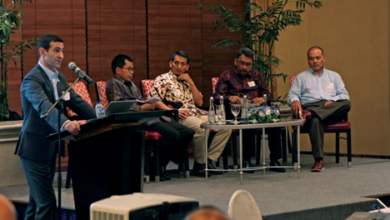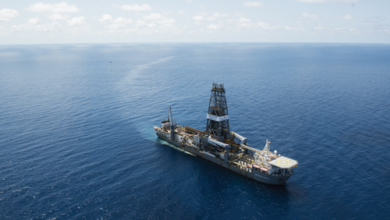Can US land repeat zero fatalities if market rallies?
By Linda Hsieh, Managing Editor
Attendees at the 2016 IADC Drilling Onshore Conference on 19 May were treated to a bit of good news during the market outlook session: The oil and gas industry is right at the beginning of a multi-year cyclical upswing. That’s according to Marshall Adkins, Managing Director for Raymond James and Associates. In fact, Mr Adkins said there is potential for the US rig count to average approximately 1,000 for 2017 and 1,300 for 2018. Those would be significant improvements over this year’s dismal rig count, which was hovering in the high 300’s as of May.
However, Mr Adkins also tempered his forecast by questioning the ability of the drilling industry to put that many rigs back to work, citing the massive amount of workforce attrition that has taken place. “Can we get 1,000 rigs running out there?… Can we get to 1,300 or 1,400 in 2018? I just don’t think so,” he said.
Over the course of the day at the Drilling Onshore Conference, however, it became increasingly clear that it’s not really a matter of whether we can get all those rigs back to work – where there’s a will, there’s a way. The real question is whether we can put those rigs back to work safely and efficiently.
“History tends to repeat itself, and if you look back, this industry has struggled coming out of downturns,” Mike Holcomb, President of Patterson-UTI Drilling Co, said at the conference. He cited the increase in incidents that occurred as the industry was coming out of the 2008-09 downturn, which was really only a blip compared with the current one. “I’m concerned that we get (the rigs) back, but we don’t do it in the right way. I think we’ve got to be disciplined as a group and make sure that our crews are actually ready to go to work before we deploy the rig.”
A lot will be at stake once the market starts to recover. In 2015, the IADC Incident Statistics Program (ISP) recorded zero fatalities for US onshore drillers. That’s the first time since the ISP started in 1962 that there have been no fatalities in this high-volume segment of the market.
It’s an achievement worth celebrating, and an indication that US onshore drillers have established a truly robust safety culture. We must not let this culture fade, no matter what the market decides to do. If Mr Adkins is right and rig demand begins to surge, companies will be scrambling to rehire crews and reactivate rigs. It will doubtlessly be a tough road ahead, as it’s estimated that 75% of the industry’s workforce has been let go. By the time we’re ready to rehire, many will have moved on to other jobs and other industries, and drilling companies will need to start a new cycle of recruiting and training.
One program that may help during this period is Gateway. This IADC program offers a standard baseline curriculum comprising RigPass, awareness-level well control training, a general introduction to the industry, behavioral training, a module on rig life, technical math, rigging basics, electrical and fluid safety, industrial practices and considerable hands-on training.
“Gateway was developed for the new-to-industry person with exactly this environment in mind. What do we do when we need to bring so many new people in?” Brenda Kelly, IADC VP Accreditation and Credentialing Division, said. See Page 64 for more on Gateway.
Regardless whether contractors use Gateway or an in-house program, it’s clear that the onshore drilling industry must push harder than ever if it wants to maintain zero fatalities. As Mr Holcomb said at the conference: “What happens going forward? How are we going to keep this zero? Because once you show me we can do it, then I’m going to expect it going forward.” DC
Email Linda Hsieh at linda.hsieh@iadc.org.
Click here to view IADC’s Incidents Statistics Program (ISP)





